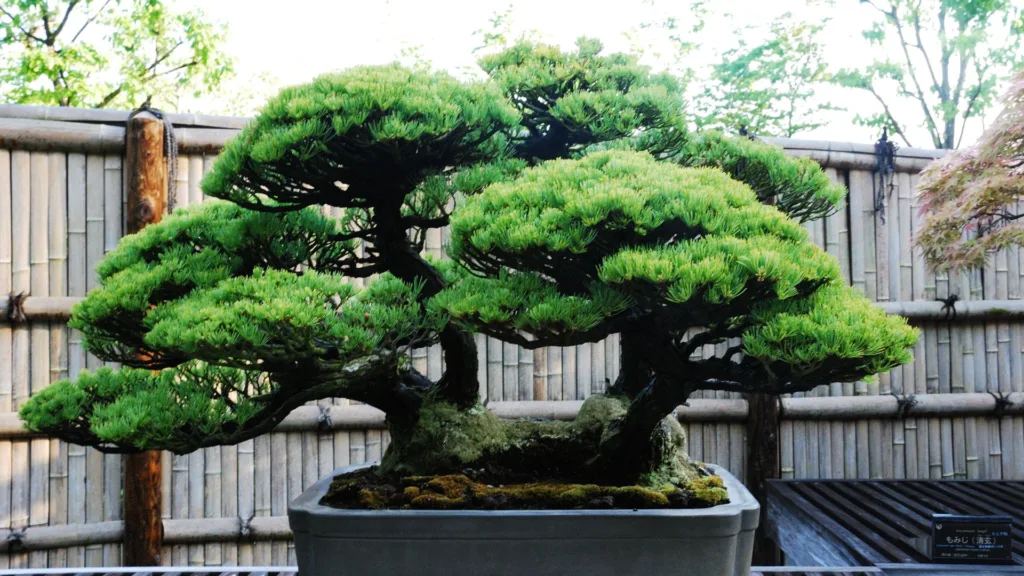Learn the truth about bonsai trees and debunk common myths about bonsai in our comprehensive guide.
Bonsai art has intrigued people globally for centuries, yet misconceptions abound. Let’s dispel some common myths about bonsai and reveal the truth about these captivating plants.
Myth 1: Bonsai Are Miniature Trees
- One of the most prevalent myths about bonsai is that they are naturally small trees. In reality, bonsai are not a specific species of tree but rather regular trees that are meticulously cultivated and trained to maintain their miniature size. The key to bonsai lies in proportion and scale, where every aspect of the tree, from the trunk to the branches and leaves, is carefully balanced to create the illusion of a mature tree in miniature form.
Myth 2: Bonsai Require Special Soil
- Another misconception is that bonsai require specialized soil to thrive. While soil composition is crucial for bonsai health, it’s not as complex as some may think. Bonsai thrive in well-draining soil that allows for proper aeration and moisture retention. Garden soil mixed with components like perlite, sand, and bark can create an ideal growing medium for bonsai.
Myth 3: Bonsai Need Constant Trimming
- Contrary to popular belief, bonsai do not require constant trimming to maintain their shape. While regular pruning is necessary to encourage growth and maintain the desired form, excessive trimming can weaken the tree and hinder its development. Bonsai pruning should be done thoughtfully, focusing on balancing the tree’s growth while preserving its natural beauty.
Myth 4: Bonsai Are Indoor Plants
- While bonsai are often associated with indoor decor, they are not exclusively indoor plants. In fact, most bonsai species require outdoor conditions to thrive. Outdoor bonsai benefit from natural sunlight, proper air circulation, and seasonal changes, which are essential for their health and development. Indoor bonsai, on the other hand, require special care to mimic outdoor conditions and prevent issues like poor ventilation and inadequate light.
Myth 5: Bonsai Are Expensive
- While bonsai trees can be expensive, especially for rare or mature specimens, there are plenty of budget-friendly options available for enthusiasts. Beginners can start with young or pre-bonsai trees, which are more affordable and offer the opportunity for hands-on training and cultivation. Additionally, DIY approaches, such as growing bonsai from seeds or cuttings, can be a cost-effective way to explore the art of bonsai without breaking the bank.
Myth 6: Bonsai Are High Maintenance
- While bonsai do require regular care and attention, they are not as high maintenance as some may believe. With proper understanding of bonsai care techniques and a consistent routine, maintaining bonsai can be relatively straightforward. Basic tasks like watering, pruning, and repotting can be easily managed with a little knowledge and dedication.
Myth 7: Bonsai Are Easy to Grow
- While bonsai may appear simple at first glance, they require a considerable amount of skill and patience to grow successfully. Bonsai cultivation involves a steep learning curve, with techniques ranging from styling and shaping to soil management and pest control. Aspiring bonsai enthusiasts should be prepared to invest time and effort into learning the art and science behind bonsai cultivation.
Myth 8: Bonsai Can Be Kept Indoors All Year Round
- While indoor bonsai can thrive with proper care, they still benefit from spending time outdoors, especially during the growing season. Outdoor exposure allows bonsai to receive adequate sunlight, temperature fluctuations, and natural elements, which are essential for their overall health and vitality. Indoor bonsai should be periodically placed outdoors to benefit from these environmental conditions.
Myth 9: Bonsai Die Easily
- While it’s true that bonsai require precise care and attention, they are not as fragile as some may believe. Most bonsai die due to neglect or improper care rather than inherent fragility. By understanding bonsai’s specific needs and providing appropriate care, enthusiasts can enjoy their bonsai trees for many years to come.
Myth 10: Any Plant Can Be Made into a Bonsai
- While almost any tree or shrub can be trained into a bonsai form, not all plants are suitable for bonsai cultivation. Ideal bonsai candidates exhibit certain characteristics, such as small leaves, flexible branches, and a natural tendency to develop a compact root system. Choosing the right species and understanding its unique requirements is essential for successful bonsai cultivation.
The art of bonsai is often surrounded by myths, bonsai representing harmony between nature and human creativity. By debunking common myths about bonsai, enthusiasts can gain a deeper understanding of these remarkable plants and enjoy their beauty for years to come.

Great work! That is the kind of info that should
be shared around the internet. Disgrace on Google for now not positioning this put up higher!